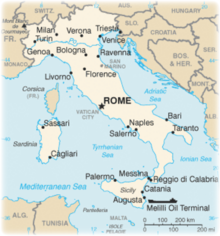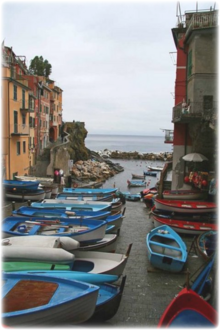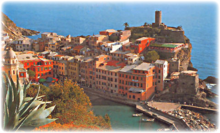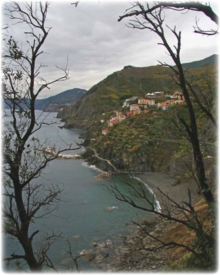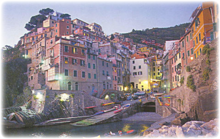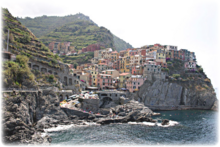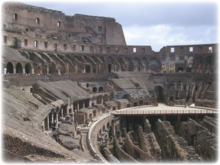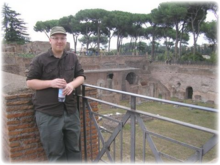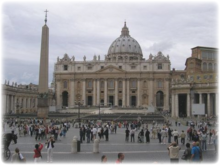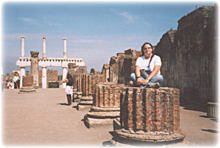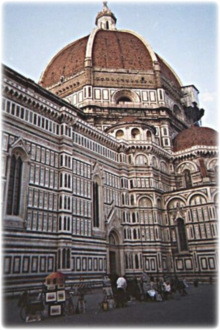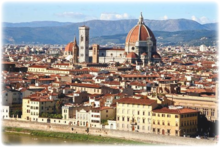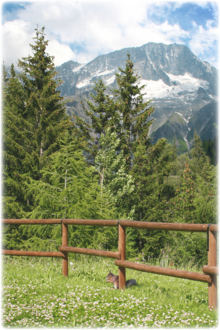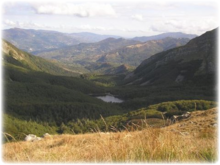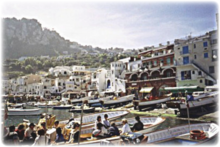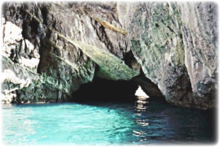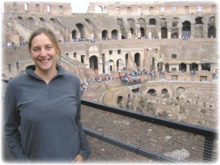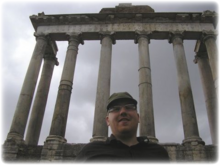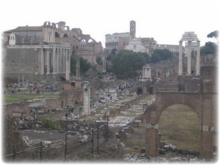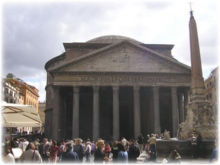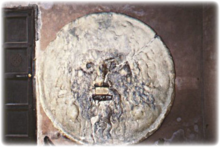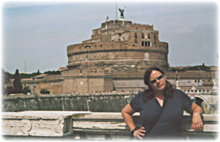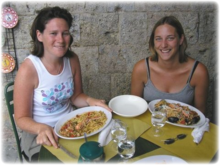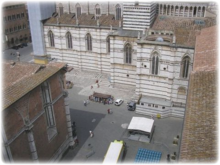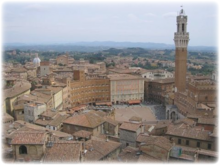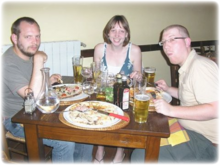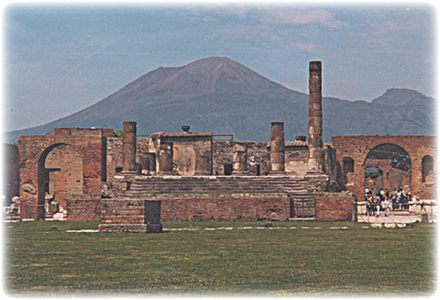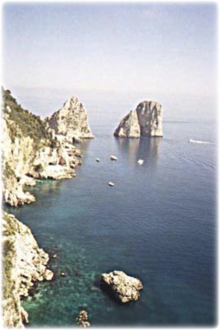
General Information
| Languages : | Italian with some areas speaking German and French |
| Currency : | Euro (EUR) |
| Time Zone : | EST +6hrs |
| Capital City : | Rome |
| Population : | 58 Million |
| Government : | Republic |
| Total Area : | 116,305 mi² |
| Climate : | Predominantly Mediterranean; Alpine in far north; hot, dry in south |
| National Holidays: | Republic Day, 2 June |
| Additional Info: | Home to the famous land mark The Leaning Tower of Pisa. Italy's greatest cultural achievements lie in its artistic heritage, including the achievements of Michelangelo, Leonardo da Vinci, Donatello, Botticelli, Fra Angelico, Tintoretto, Caravaggio, Bernini, Titian and Raphael. |
Destination Activities
Activity Details
Hiking and visiting Cinque Terre
In northwest Italy, the Cinque Terre (Cinque = Five; Terre = land) hides out in steep, craggy cliffs that overlook the Ligurian Sea. Almost completely inaccessible by car, getting there by train requires a determined traveler prepared for multiple train connections.
The best time to slide the Cinque Terre onto your increasingly long list of places you must see is between the French Riviera-better still, give the mass crowds, pickpockets, and over-priced accommodation of the French Riviera a miss-and the enticing cities of northern Italy. From Nice, the first stop on your journey into Italy is Ventimiglia and it is here you will make your first train connection. The train journey south from Ventimiglia to La Spezia is up there with some of the most beautiful routes one can take. The train tracks run a course cut through the cliffs that overlook the glistening blue sea below. The train rushes into long, dark tunnels then flings you out on the other side into bright blue scenery; the anticipation of seeing the calm deep blues of the sea can be consuming when you are surrounded by the deep blackness of the tunnels.
Don't be surprised if you are the only person getting off the train when you arrive in La Spezia. La Spezia is one of two train stations that connect the Cinque Terre with the outside world-the other is Genoa. The local train (not direct) from La Spezia to Genoa will stop at all five villages of the Cinque Terre before going on to Le Vanto then Genoa. It's a deserted train station so a good place to practice some Italian without being overheard by other travelers. The trains are pretty regular so don't spend too long pouring over train itineraries-I just turned up and one came along in less than 10 minutes. I found that repeating a name of one of the five villages that make up the Cinque Terre got a decent response, "Riomaggiore? This one, Riomaggiore?" A series of emphatic head nodding and I felt reasonably confident I was on my way to this promised land. It is, however, advisable to know some basic Italian as the people of the Cinque Terre appreciate hearing a foreigner attempt at least one "grazie" or "molto bene".
When you get out at Riomaggiore, the most southern of the five villages, you have one option, which is to follow a tunnel through the cliff face. The scene as you burst out of the tunnel is amazing-the village consists of one narrow, steep lane with pastel-colored houses and shops running along each side. Turn to inspect the other direction and you will be stunned to find yourself stood looking down at a beautiful rustic harbor befitting of this small land. Brightly painted wooden boats rock gently next to a small wooden pier. There are high cliffs at either side of the village making it feel hidden away from the rest of the world.
Each village has its own charm.
Riomaggiore caters less to tourists than the rest although I discovered this was its charm as it was enjoyable to see Italians going about their daily business. The small fishing harbor with brightly painted boats is all hustle and bustle when evening begins and locals return with their catches.
Manarola is the next village along from Riomaggiore. The two villages are quite similar to each other-more pastel colored tower-style houses with thin alleyways running between them and equally picturesque views of the village and harbor area. Manarola is the quietest village of the five.
To reach Corniglia, the middle village, you must climb the 'Lardarina', a long series of steps carved in the cliffside. As I climbed the flights of stairs that weaved back and forth up the cliff face, a fellow tourist heading down advised me there were 377 steps in total. The climb is worth it though as Corniglia is the highest village in the Cinque Terre and offers beautiful cliff-top views of the entire area set against the beautiful blue backdrop of the sea. Corniglia has a wide variety of tourist shops selling local goods and wares and also has several fantastic gelataries.
The penultimate village heading north from Riomaggiore is Vernazza, which is one of the most beautiful as it boasts a picturesque village with a small town square perfect for people watching while enjoying a slice of warm, freshly made foccacia. It also has a pier that runs out into the sea offering beautiful views of the village itself.
Vernazza and the final village, Monterosso, retain the largest share of the tourists. Monterosso is the one village that can be accessed by car and its sandy beach attracts a lot of locals; the other villages have pebbly beaches. Monterosso is also the largest village and feels more like a gateway to the other four than one of them itself. It is a great way to end your stay in Cinque Terre as it will prepare you again for the wild ways of civilization that you may have forgotten about during your stay on the Italian Riviera.
The five villages, Riomaggiore, Manarola, Corniglia, Vernazza, and Monterosso, are not only connected by train; a windy trail passes up and down along the cliff ways between them. This trail is a 3-4 hour hike for those wishing to do it all on one go. It's more enjoyable and less straining, however, to stretch the hike over two days-you can visit one or two of the other villages and then hike or take the train back to the village you are staying in and return the next day to continue where you left off. There is a small daily fee to enter the hiking trails although the money foes to the national trust who are responsible for protecting the Cinque Terre. There are times during the hike where it seems like every corner turned reveals another set of makeshift rock steps leading upwards into the cliffs. The bright side, for those less accustomed to this constant climbing, is that there is not one part of the hike where you cannot stop for a nice long moment and gaze out at the view. There is always a photograph waiting to be taken-it might be the village you are heading towards, the village you just left, an exotic plant or vine, or the accompanying idyllic scenery of greens and blues that cover the landscape. The photographs I took seem more like postcards than holiday photography. The scene is breathtaking, much like the hike.
Cultural Activities
From intrepid British traveler, Antonia Ridge: Notes on Traveling around Italy
Rome
There is a hell of a lot to do in Rome, and I find it a little overwhelming if I'm honest because unless you have studied the historical background for several years in the lead up to your visit, a lot of information seems to go over the top of your head (or does me anyway). However, please do not allow my introduction to deter you, it is an absolutely fantastic city with a lot to offer, even beside history!
Must Do's
» The Coliseum (of course!) It has an absolutely mind blowing structure, the history is fascinating (if a little gory - the rough guide informs us that approximately 500 African species' of animal became extinct through the games which went on in the Coliseum)
» The Palentine Hill - the favorite place from my last visit. Seemed to be much less touristy than the Coliseum and Forum yet this was the place where it all began! Pretty much as far back in time as you can go, the foundations of Rome were built here. The remains remain - it's really interesting, and a lovely space to wander around. The ticket to the Coliseum also gets you into Palentine Hill, and my advice is that you go to Palentine Hill first and buy the ticket - we queued for 40 minutes to the coliseum and literally walked straight into the Palentine Hill - so do the Hill first and beat the queue!
» The Forum. This sight is free, and it is amazing to wander around the huge imposing buildings and try to imagine what it must have been like in the Roman times.
» The Vatican - absolutely beautiful and sincere, steeped in political and historical background. Climbing the duomo was one of the terrifying and most exhilarating experiences of my life, although the queue for an hour or so beforehand should have put me off!
» The Pantheon - another imposing Roman structure. I love the way that the light beams in through the hole in the roof (not due to disrepair!). I also love the gargoyle faces on the fountain in the square outside the Pantheon.
» The Trevi Fountain - you're supposed to throw a coin over your shoulder and make a wish that you'll return to Rome again one day. I tried but there were too many other tourists in the way and so I couldn't get close!!
» The Spanish Steps - not sure why they're called that, but standing at the top is a lot of fun, especially if you want to spit on unsuspecting (American - maybe I can't say that!) tourists below! [Note - they are called the Spanish Steps it seems because the Spanish Embassy is on this piazza.]
Shopping is fantastic in Rome, especially if you have a lot of money to spend! If that's the case wander the shops around the Spanish Steps. If you're a pauper like me have a look in the guide book for markets (tend to be one day a week in various locations throughout the city).
Bus tours - are useful to get a grip of the city logistics, but I'm not sure I'd recommend them just now. There are too many different companies, each owning too few busses so you may have to wait up to 2 hours in between service. Also, the (pre-recorded) commentaries are not that good, again, because there is so much to see and so they don't even scratch the surface and you're left wondering about all the other buildings surrounding the one they've just referred to.
Food/Drink - we found the Peroni Beer Hall on our last visit, which is located on Via di S Marcello and fairly close to the Trevi Fountain. The staff were very hospitable, food basic and extensive and the atmosphere is fun, catering for young families to beery friend groups and everything in between.
Pompeii (added by Amanda): And not far by train is Pompeii - definately a great day trip get away from Rome. Its a 3 hour train journey with a connection in Napoli. Snooze or look at your compartment compadres or enjoy the scenery zipping by - its all fun. On the shorter scenic part of the journey, you will speed along by the coast, passing fishing villages, and small towns with Mount Vesuvius approaching on the left side (assuming you are facing forward). Pompeii is divided into 2 parts -the new town (living ash-free) and the old (over 2,000 years old). It costs 10E to enter the old part and is worth every penny. There were no roofs on the buildings so its fair to assume the houses had been thatched and that didn't so well against the volcanic ash fall and following 2,000 years. The streets are stone and paved very well even leaving a very useful gully down each side for drainage - smart these folks. In fact everything you come across demonstrates this culture was very smart and advanced - they even had a form of speed bump to stop carts being pulled along too fast. Its a great day adventure that involves a bit of travel and planning and a lot of walking but new Pompeii has some nice cafes happy to present you with some fresh Peroni an gellati (Italian beer and ice cream).
Firenze (Florence)
Must Do's
» Duomo - such an impressive building, the dome is a lovely eclipse on any view in Florence. Climb the Campanille di Gotto rather than the Duomo itself for breathtaking views of the city (with views of the dome to boot). Inside the Duomo is breathtakingly beautiful, although awfully crowded!
» Ufizi - almost impossible to get into during high tourist season, but worth a visit on the outside. The copy of Michealangelo's David statue is in the square beyond the Ufizi, along with some other impressive statues.
» Ponte Vecchio - literally "the old bridge" - beautiful wooden bridge built in 900AD. Now houses jewelry stores and a million tourists! I love looking up at the second/third floors above the shop fronts for the lovely wooden shutters and iron details.
» There's a huge market in Florence near the Duomo, which is definitely worth a visit for some Florentine china, leather goods and other general items. Need to be good at bartering though!
Pisa
When in Pisa you MUST visit the leaning tower - in fact, there really isn't a huge amount to do other than that. However, the site of the tower is wonderful. The other two buildings (the Duomo and Baptistry) are far more beautiful than the tower itself, although it's difficult not to focus on the tower with its bizarre lean! The story with the tower is that it is built on the join between sand and rock, so the foundations sank on one side. Despite a number of scientists working on it (and Superman once attempted to make it straight) the tower continues to lean. You can climb up it now so it must be safe!!
Pisa is on the coast - places to visit nearby are: Viarreggio, Cinque Terre (see above review on hiking).
Biking
What a fantastic way to see one of the most beautiful and culturally exciting countries in Europe - by bike. The Italians love cycling so you'll find it an ideal location to take your bike and show it some of the world. Italy being 116,000 sq. miles or so means you might not want to travel the entire country in one go. Good news though because traveling with your bike couldn't be easier: Trenitalia permit travelers to take their bicycles with them to best enjoy their chosen itinerary. With your bicycle with you, you can board all the direct, regional and inter-regional trains bearing the bicycle symbol. Below are some of the regions that make great cycling tour areas:
» Trentino - This is almost entirely a mountainous province with a main valley crossing it in its center. This valley is called Valle dell'Adige (Adige Valley), named after the Adige river flowing within it. The most popular path is in fact the Valle dell'Adige. The cycle path links, from north to south, the provinces of Bolzano, Trentino and Verona: the heart of the Alps to the Po Valley. It runs almost completely along the river Adige, alternating between its right and left banks, using the old riverside roads which cross fields and orchards, skirting past hamlets, villages and the cities of Trento and Rovereto. It doesn't matter if you undertake it from the north or the south, the altitude shift between its highest and lowest points is insignificant. It does not have demanding climbs, the steepest are those required for climbing the river's banks. Nearly the whole length of the path is along roads protected from motorized traffic and is reserved exclusively for cyclists, pedestrians and very infrequent agricultural vehicles.
» Tuscany - A region of Central Italy that is two thirds hilly and one fourth mountainous. The remainder is constituted of the plains that form the valley of the Arno River. There are many daily trips in this region, centered around the beautiful town of Sienna - or you can take a tour of the land completing a loop around the area. Travel in a counter clockwise direction and touching the principle area of the Sienese countryside: Farma Merse, Val d'Orcia, Amiata, Crete Senese and last but not least, the Chianti. The loop doesn't ever go into Siena itself but can be easily reached by detouring from any one of several points along the way.
» Ferrara - The Province of Ferrara is a province in the Emilia-Romagna region of Italy. Its capital is the city of Ferrara. This area gives you a break from the hills and mountains of Northern Italy. The landscape features a wide and fertile plain, once largely covered with water. You can pedal slowly through an environment of cultivated fields, rural houses, aristocratic villas, castles, fortresses and a network of rivers and canals reigned over by the great river Po. The town of Ferrara is a great mix of renaissance and medieval art and architecture. The town is still surrounded by more than almost 6 miles of ancient walls, mainly built in the 15th and 16th centuries. The most prominent building is the square Castello Estense, in the center of the town, a brick building surrounded by a moat, with four towers. It was built after 1385 and partly restored in 1554; the pavilions on the top of the towers date from the latter year.
Photography
If you have adventure-travel related experience in this region and would like to add content to this page, please contact us to learn how.

